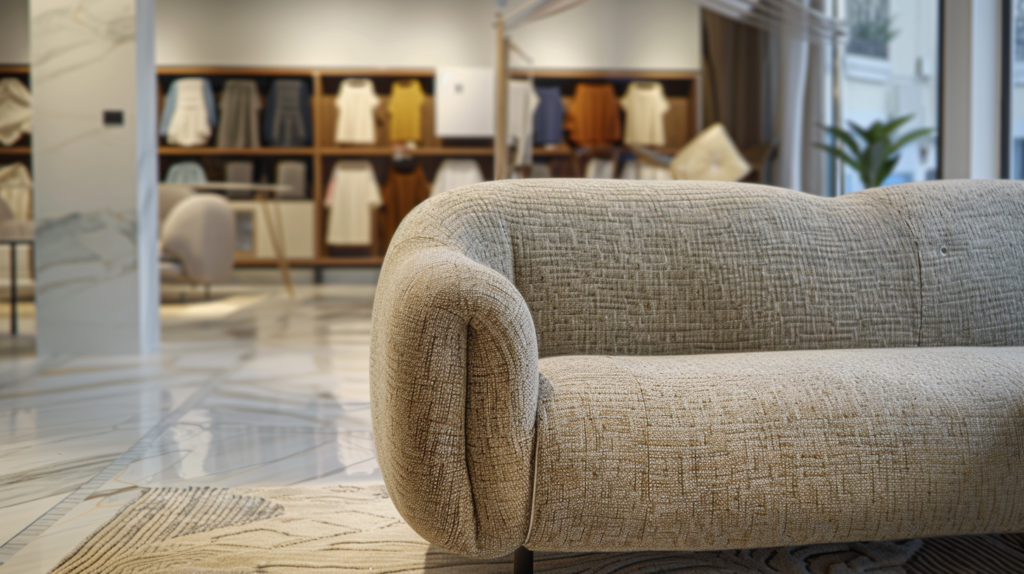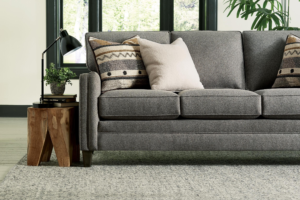Sofa upholstery is a critical aspect of furniture design, balancing durability and comfort to meet the needs of diverse households and spaces. While durability ensures the sofa withstands daily wear and tear, comfort determines how inviting and functional it is for relaxation. The durability and comfort of sofa upholstery depend on the type of fabric used, the sofa’s intended use, and the household’s lifestyle. Here’s an in-depth look at how upholstery can be both durable and comfortable, along with factors to consider when choosing the right material.
Durability of Sofa Upholstery
Durability refers to how well the upholstery fabric can resist damage from frequent use, exposure to sunlight, spills, and other environmental factors. High-quality upholstery can last for years without significant wear if properly selected and maintained.
Factors Contributing to Upholstery Durability
- Material Type
- Natural Fabrics: Materials like leather and wool are known for their natural strength and resilience. For instance, leather is highly durable and develops a patina over time, which enhances its character.
- Synthetic Fabrics: Polyester, microfiber, and performance fabrics such as Crypton or Sunbrella are engineered to resist stains, fading, and abrasion, making them ideal for high-traffic areas.
- Abrasion Resistance Fabrics are tested for durability using the double rub test, which measures how many cycles a fabric can endure before showing wear. Upholstery for high-traffic furniture should have a rating of at least 15,000 double rubs, with 30,000+ being ideal for heavy use.
- Resistance to Stains and Fading Durable upholstery fabrics are often treated with stain-resistant coatings or woven from materials that repel liquids and dirt. For sofas exposed to sunlight, fade-resistant fabrics like Sunbrella or polyester blends are excellent choices.
- Tightly Woven or Non-Woven Fibers Fabrics with tight weaves, such as microfiber or canvas, resist pilling and tearing better than loosely woven materials. Leather, as a non-woven option, offers superior tear resistance and does not fray.
Durable Sofa Upholstery Options
- Leather: Resists wear, easy to clean, and ideal for households with pets or kids.
- Microfiber: Durable and stain-resistant, with a soft texture that holds up to frequent use.
- Performance Fabrics: Crypton, Sunbrella, and olefin are designed for extreme durability, resisting stains, fading, and moisture.
Comfort of Sofa Upholstery
Comfort in upholstery is just as important as durability, as it determines how enjoyable the sofa is for lounging, entertaining, or relaxation. Comfort is influenced by the fabric’s texture, temperature regulation, and flexibility.
Key Factors Affecting Upholstery Comfort
- Fabric Texture
- Soft Materials: Microfiber, velvet, and cotton offer a soft, plush feel that is inviting and comfortable for long periods.
- Smooth Finishes: Leather provides a sleek and luxurious texture, though it can feel cool to the touch in colder climates without proper padding.
- Breathability
- Natural Fibers: Cotton, linen, and wool are more breathable, making them comfortable in warm climates.
- Synthetic Fabrics: Polyester and blends are less breathable but can mimic the texture of natural fibers to add comfort.
- Temperature Regulation
- Leather and other non-porous fabrics may feel warm in summer and cool in winter unless paired with cushioning or temperature control.
- Wool and velvet offer natural insulation, keeping seating warm in cooler months.
- Cushioning While the upholstery fabric itself plays a role in comfort, the cushioning material underneath is equally important. Foam density, spring systems, or down filling contribute significantly to how comfortable a sofa feels.
Comfortable Sofa Upholstery Options
- Velvet: Plush and soft, offering a luxurious feel for lounging.
- Linen: Light and breathable, ideal for casual or formal settings in warmer climates.
- Cotton Blends: Combine the softness of cotton with the durability of synthetic fibers for a balanced feel.
Balancing Durability and Comfort in Sofa Upholstery
While durability and comfort are often seen as opposing factors, modern upholstery options strike a balance between the two. Performance fabrics, for example, offer the rugged resilience of synthetic fibers without compromising on softness or flexibility. Blends of natural and synthetic materials, like cotton-polyester, combine the best attributes of both.
Examples of Balanced Choices
- Leather with Cushioned Padding: Adds softness to leather’s durable and sleek surface, ensuring comfort over extended use.
- Microfiber Upholstery: Durable and stain-resistant, yet soft to the touch and versatile for various styles.
- Wool-Nylon Blends: Provides the warmth and texture of wool with the strength of nylon, ensuring long-lasting comfort.
Choosing the Right Upholstery for Your Needs
The best upholstery depends on your specific requirements. Consider these scenarios:
- Families with Kids or Pets: Performance fabrics like Crypton or microfiber offer durability and stain resistance while remaining soft and inviting.
- Formal Spaces: Luxurious materials like velvet or silk prioritize comfort and aesthetics, making them suitable for low-traffic settings.
- High-Traffic Rooms: Durable fabrics like leather, polyester blends, or Sunbrella can withstand frequent use without compromising appearance.
- Temperature-Sensitive Homes: Opt for breathable options like cotton, linen, or wool for year-round comfort.
Conclusion
Sofa upholstery can be both durable and comfortable when chosen thoughtfully. Materials like leather, microfiber, and performance fabrics demonstrate that resilience doesn’t have to come at the expense of softness or visual appeal. By considering your lifestyle, the sofa’s intended use, and maintenance preferences, you can select an upholstery fabric that combines longevity and comfort, ensuring your sofa remains a functional and cherished centerpiece of your home for years to come.











